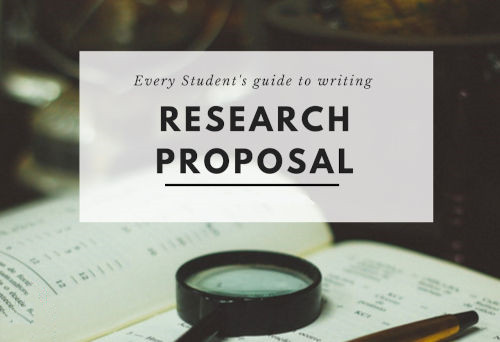Research Proposal怎么写?Research Proposal范文参考
发表时间:2021-10-26 14:23:35 作者:zhouzhengmao 阅读:881次
Research Proposal研究计划书,我们一般简称为RP。研究计划书是研究生学校接收研究生的重要考核指标,它的内容展现了学生进入学院之后的研究方向与课题,也体现了学生对自己在校学习阶段内的大致规划。Research Proposal在博士申请阶段更为常见,但近年一些硕士项目也对申请者的研究计划提出了要求。在本文中,简单直接的使用WHAT(是什么)、WHY(为什么)、HOW(怎么做)模式帮助学生了解Research Proposal,并且附上了Research Proposal范文。本篇推文旨在帮助申请者提供一种研究计划书的写作思路,希望对大家有所帮助。

本教程专为需要提交研究计划作为其申请条件或希望为自己撰写研究计划的研究生而设计。目的是帮助你准备一份编写清晰且重点突出的研究计划。
首先我们要弄清楚研究计划的目的和要求。然后,我们将研究计划分解为核心与组成部分,并分别进行检查。
What is the purpose of a research proposal?
研究计划的目的是什么?
研究计划的目的可以概括如下:
● 提出一个对你所在的知识领域有重大贡献的研究项目。
●制定项目的详细计划,包括方法论和理论框架。
● 确保拟议的研究可以在所需的时间和可用的资源下实现。
● 证明您有足够的专业知识和经验来承担该项目。
● 即使完成研究计划不是你的申请要求,写一个也是个好主意。撰写研究计划将有助于您阐明目标和关键思想。它将使您能够考虑研究过程的每个阶段,以便制定清晰详细的计划。它还将帮助您预见您在候选人资格期间可能遇到的问题,并提示您思考在这些问题出现时如何处理它们。
Which skills are required for a research proposal?
研究计划需要哪些技能?
撰写研究计划涉及许多技能。这些技能可以分为三类:
1.Subject knowledge and research skills学科知识和研究能力
该计划让你有机会展示你对学科知识的掌握程度和对当前研究趋势的熟悉程度。
2.Critical thinking skills批判性思维能力
一份好的研究计划展示了高级分析、评估和综合技能的证据,以及创造力和结合纵向和横向思维的能力。
3.Communication skills沟通技巧
研究计划要显示出你有用准确简洁的语言表达自己的能力。
在写作计划时,有必要牢记这些技能,因为读者将在你的写作中寻找这些技能。

Research Proposal Content and structure
研究计划内容和结构
研究计划所需的内容和结构因研究领域而异。因此,你应该与你的主管/导师仔细协商,以便了解该研究领域的任何特定要求。但一般而言,研究提案包含以下要素:
● 选题背景、意义及研究问题
● 研究目的和问题
● 文献回顾
● 研究/项目设计
● 时间轴
● 预期结果/影响
在本教程中,您将找到成功完成每个部分的方法。
Zeroing in on the target
瞄准目标
将研究计划视为从大局(广泛的学术领域)归零到特定目标(你的项目)是很有用的。
首先,研究计划需要在更广泛的学科领域中确定一个特定的研究领域,并确定它为什么重要且值得探索。
其次,研究计划需要确定现有的或新发现的知识差距,这些差距可以发展成一个重要的研究问题。
第三,研究计划需要为你的项目建立一个令人信服的案例,作为解决研究问题的可行方法。这方面通常是计划书中最令人兴奋和最具创意的部分,它让你展示你的项目设计如何为现有或新发现的问题带来新方法。
最后,计划书需要证明你提出的解决问题的方法在作为候选人期间是可以实现的。
我们现在将单独检查研究计划的核心组成部分。
1. Writing the introductory section写引言部分
(1)Background背景
首先您需要向读者介绍研究主题并解释其重要性。最好向缺乏专业知识的观众推销你的解释。为此,您可能需要提供一些有关该主题何时出现和演变的背景信息。重点关注主要趋势、里程碑式的研究,如果合适的话,还有最近的学术发展。
(2)Significance意义
为什么这个话题对你很重要?为什么其他人应该对它感兴趣?思考是什么促使你在该领域进行研究会有所帮助。你还可以考虑该领域的学者如何讨论其重要性。你对其重要性的理解在哪些方面相似或不同?
(3)From identifying a gap to construct-ing a problem发现差距与构建问题
确定你所在领域学术文献中的差距对于创造新知识至关重要。但是,你需要证明这个差距是值得探索。这要求你了解所选研究领域的关键问题和关系,并与你的导师认真商讨。识别重大差距还可以帮助你了解的关键概念和关系。这些重要的概念和关系反过来为你提供了概念、理论和/或分析框架的基础,你可以将其置于适当的位置来解决你的研究问题。
(4)Writing and structuring the introductory section编写和构建介绍部分
你的提案的介绍部分应遵循“瞄准目标”(“zeroing in on the target”)的原则。换句话说,它应该从广泛的领域开始,并在你自己的项目中逐渐为零。请记住,提案的目的是沟通和证明你研究项目的基本原理,因此建议你使用清晰准确的语言。
2. Research aims and question研究目的和问题
(1)What is a good research question?什么是一个好的研究问题
构建一个清晰且重点突出的研究问题(或多个问题)对于提出好的研究计划至关重要,更重要的是,对塑造研究方向有决定性作用。这个问题准确地指出了你想要探索的内容,并允许读者评估你的项目是否可行。它还让读者了解你可能会在回应中提出的论点或发现。这使他们能够为你提供有关研究方向的有用反馈。
一个好的研究问题的标准因研究领域而异。因此,建议你咨询导师并仔细阅读其他论文和已发表研究中的示例,以了解你所在领域的要求。
然而,一般来说,一个好的研究问题应该是:
● Relevant相关性:它必须与项目试图解决的问题明确相关。
● Important重要:它应该解决该领域的一个关键问题(请参阅上面的从识别差距到构建问题)。
● Clear清晰:应该用简洁的语言表达,避免产生歧义。
● Precise精确:应明确说明正在调查的内容。
● Researchable可研究性:回答问题所需的信息和来源必须存在并且你必须能够访问它们(你通过调查、实验等自行生成的数据除外)。

在存在多个研究问题的情况下,这些问题必须彼此明确相关,以便它们加起来成为一个连贯的整体。
(2)Constructing a research question构建研究问题
你的研究问题(或多个问题)的措辞很重要,因为它将指导你的方法和写作,并有助于你从提案读者那里收到的反馈。重要的是你要明白,如果你认为需要更改措辞,或者如果你发现对主题采取不同方法的发现,你可以在以后更改研究问题。事实上,你在提案中提出的问题很可能与你的论文实际回答的问题不同。
研究问题的措辞可能因研究领域而异,因此建议你咨询导师并从其他研究计划、论文或已发表论文中寻找示例。
但是,可以提出以下一般要点:
● 如何以及为什么提出问题通常是首选,因为它们会产生分析性而非描述性的发现。
● 问题的措辞应该可以有多种不同的答案。
● 措辞应该是中性的。避免价值判断或未经检验的假设。
● 措辞应包括你确定的关键概念和关系。
3. Review of literature文献综述
(1)The purpose of a literature review for a research proposal研究提案中文献综述的目的
文献综述调查了你研究领域的关键学术著作,例如书籍、期刊论文和研究生论文。评论应该总结、分析、分类和比较最重要的作品——它不需要涵盖关于该主题的所有内容。最重要的是,它应该通过概述先前研究的优势和局限性,清楚地表明你的研究项目将解决的差距或问题。
(2)Planning and writing a literature review计划和撰写文献综述
在为研究计划撰写文献综述时,主要考虑三个因素:
Focus重点:研究项目的文献综述应准确描述一般领域,但不用详细讨论每篇文章,而应将重点放在与你的特定主题直接相关的作品上。通常最好将重点放在对该主题最突出和最近的贡献上。
Structure结构:不应单独讨论每个选定的文本,而应围绕关键的相似性、差异和你想就该主题的学术写作发展提出的其他要点来组织文献综述。搜索有关该主题的评论文章(在参考期刊中找到的一种文献评论)并研究最近出版的有关该主题的书籍和期刊文章中包含的文献评论。考虑这些作者如何对文献进行分类和评估。
Faculty/School specifics学院/学校的具体情况:以上几点适用于大多数研究提案,但一些学院和学校对文献综述部分的内容和字数有自己的要求。这将影响你选择和评论文献的方式。因此,检查你的学院或学校的具体要求非常重要。
4. Study/project design学习/项目设计
(1)The purpose of the study/project design component
研究/项目设计部分的目的
在提案的这一部分,你需要回答三个问题:
● 你将使用哪些类型的数据或资源?
● 你将如何收集和管理这些材料?
● 你将使用哪些理论和方法技术来解释和分析这些数据/来源?
以清晰和合乎逻辑的方式解释项目的设计非常重要。你的读者应该能够清楚地看到你将做什么以及将如何做,以及这种数据/资源和方法的组合将如何解决你的研究问题。
(2)Tips for completing the study/project design component完成研究/项目设计部分的提示
关于研究/项目设计部分,需要牢记的是它并不是简单的由待执行的任务列表组成。最重要的是,需要确定这些任务构成了探索研究问题的最有效方法。
撰写清晰且重点突出的研究/项目设计的关键是展示你如何建立和/或偏离该领域主要学者的理论和方法论方法。因此,有必要:
A.考虑其他研究人员使用的理论和方法;
B.考虑尚未使用(或未充分利用)但可能会使用的理论和方法。
在撰写您的研究/项目设计时,请具体说明:
A.收集信息的方法
B.用于分析信息的理论和技术
C.这些方法与研究问题的相关性
指定你将进行的特定活动,并展示它们将如何对你的研究问题的调查做出贡献(例如,“我将对政治讽刺进行密切的内容分析,以展示它如何颠覆“严肃”的视觉和修辞手法。)。
最后,预测你在进行研究设计时将处理的任何潜在障碍。没有任何方法是完美的,因此你需要描述缺点是什么,并说明你将如何解决它们。
5. Timeline时间
时间线向读者表明,你的项目可以在候选期限内完成。时间表应包括一系列目标,你需要满足这些目标才能完成论文的各个方面,从最初的研究到最终的编辑,以及每个步骤的预期完成日期。它还应包含一份关于迄今为止取得的进展的声明。时间表还应考虑其他与研究相关的活动,例如会议和出版物(如果适用)
6. Expected outcomes/impact预期结果/影响
通过陈述你的预期结果来结束你的研究计划。在研究过程的这个阶段,你希望得出什么论点和结论?你的读者会明白,这些是基于撰写本文时研究范围的预测结果,并且它们几乎肯定会根据进一步的研究而改变。但是,你必须让读者了解可能得出的结论。这将使你的读者能够进一步评估你项目的重要性和有效性。它还将向你的读者表明你已经提前考虑并你研究的潜在结果和影响。
为避免在提案的早期重复描述你的研究目标和意义,请关注你如何设想你的研究将有助于你所在领域的辩论和趋势。你的发现会对如何看待问题产生什么影响?你的方法可能会对未来的研究方式产生什么影响?

A Sample Research Proposal with Comments
一份研究计划书范文
一个研究项目或论文至少需要两个学期才能完成。
在开始研究之前,即参加第一学期的研究课程,学生必须经过计划书写作阶段。在此期间,学生将制定他们的计划书,并由其研究顾问进行审查。这意味着学生在第一学期开始前需要数月的规划和背景研究工作,未经批准,学生不得参加研究课程。
对于计划在秋季学期开始研究的学生,提交研究计划(给您的导师)的截止日期是7月。对于计划在春季学期开始的学生,截止日期是12月。在提案阶段,学生应与CM教员讨论他们的研究兴趣,确定研究主题,进行初步文献审查并制定项目建议。研究计划应讨论问题陈述,大约3-5页的目标、研究方法、研究活动和时间表。
附上一个实际案例提案供大家参考。
1.Introduction
Every construction project is unique and has its own operating environment and sets of technical requirements. As a result, the execution of a construction project is subject to numerous constraints that limit the commencement or progression of field operations, which invariably have significant negative impact on overall project performance. By definition, constraints refer to any condition, such as temporal/spatial limitations and safety/quality concerns, which may prevent a project to achieve its goals. Successful execution and control of a construction project relies on effective identification and management of constraints through master planning and short-term look-ahead scheduling. While the master schedule provides a global view of a project and the overall execution strategy, a look-ahead schedule offers a detail account of operational constraints and a detailed plan showing work to be done within a relatively short time window. Ideally, these detailed schedules should reflect actual field conditions and provide field personnel with operation instructions free of constraints and conflicts (Hinze 2008). This look-ahead scheduling and constraint analysis procedure is also a critical component of the last-planner methodology proposed by Ballard (2000). This research project will provide an overview of state-of-art schedule constraint analysis practice during look-ahead scheduling. In addition, it will propose a conceptual framework for managing constraints.
评价:背景或介绍部分描述了研究领域的基本事实和重要性——您的研究领域是什么、研究的动机以及它对行业实践/知识进步的重要性如何?
2. Problem Statement
The importance of developing a constraint-free and reliable work plan has long been recognized by the industry. However, numerous construction projects are still plagued by delays and cost overruns, which can frequently be traced to ineffective identification and treatment of constraints. First, when a constraint is not properly identified during scheduling, subsequent conflicts in the field are inevitable. Today’s projects are becoming more and more technically complex and logistically challenging, which exposes construction operations to even more complex constraints. Second, the traditional scheduling methods, bar charts and Critical Path Method (CPM) which are widely used as a basis for constraint analysis, greatly limit our capability in modeling and resolving constraints.
during look-ahead scheduling. These methods have long been blamed for their limitations in modeling and communicating constraints, including inability to cope with non-time-related precedence constraints and difficulty to evaluate and communicate inter-dependencies at the field operation level (e.g. Sriprasert and Dawood 2002; Chua and
Shen 2001). In summary, there is a need for a better understanding of constraints in construction and a structured approach in identifying and modeling constraints to ensure a constraint-free work plan. More specifically, the following research questions need to be addressed:
(1)What are the typical constraints found in various construction projects?
(2)How to classify these constrains for easier identification and modeling?
(3)What are the current industry practice as well as research advancements in modeling and resolving constraints? How to unify the constraint classification knowledge and various constraint modeling efforts into a framework for total constraint management?
评价:问题陈述提供了对需要解决的问题的清晰简洁的描述——您将解决的该研究领域的具体问题是什么(例如,对某个主题缺乏理解,表现不佳……)?
3. Objectives
The long term goal of the research is to develop a formalized constraint management system. Constraint management is defined herein as the process of identifying, classifying, modeling, and resolving constraints. The objective of the current study is to provide a comprehensive review of literatures and industry practices in relation to constraint analysis and outline a conceptual framework for constraint management. Particularly, the study has the following sub-objectives: 1. To provide a comprehensive review of sources and characteristics of constraints typically found in construction projects; 2. To develop a constraint classification method for easier constraint identification and modeling; 3. To review current industry practices and researches in regards to constraint modeling; 4. To outline a conceptual framework for total constraint management. The result of this study will be valuable to the industry practitioners as well as related software providers in developing better practice and tools for constraint management and look-ahead scheduling.
评价:目标提供了将通过拟议研究实现的目标列表——有哪些好处/影响(例如更好的理解,提高生产力……),研究问题是否得到解答?
4. Preliminary Literature Review
A preliminary literature review shows that past studies are primarily focused on understanding and modeling a particular type of constraint, such as technological, contractual, resource, spatial, and information constraints. Limited progress has been made on classifying various constraints according to their characteristics in a comprehensive manner. In terms of modeling and resolving constraints, various approaches have been recommended. For example, many CPM-based methods are applied to deal with time-related constraints; knowledge-based systems were used to automate work plan generation; network-based optimization algorithms were developed to resolve constraints; and databases and visualization techniques, such as 3D, 4D, and Virtual Reality (VR), are used to communicate and visualize constraints. What is missing from the past studies is a comprehensive and structured approach in managing constraints in construction projects.
评价:初步文献综述:提供先前相关文献的总结对研究问题及其优势和劣势的研究以及您研究的理由——其他人知道/做过什么?而且,为什么你的研究仍然是必要的?
5. Methodology
The primary research method for this study is literature review and conceptual modeling. Constraint identification and classification through a structured approach is the very first step toward a “zero-constraint” environment. This study will first review various types of constraints in construction and their characteristics. Based on this understanding, a classification method will be developed to categorize constraint factors for the purpose of constraint identification and modeling. In the second stage of this study, existing constraint modeling methods will be identified based on a comprehensive review of current industry practices and academic researches. Finally, once the constraint classification and modeling techniques are identified, a conceptual framework for total constraint management will be outlined. This study will be conducted between September 2010 and May 2011.
评价:研究方法定义了研究方法和逻辑步骤——做什么以及如何解决问题并实现建议目标?将使用哪些研究方法(例如调查、建模、案例研究……?如有必要,附上项目进度表)
References
Ballard, G. (2000). “Last planner system of production control.” Ph.D. Dissertation. Univ. of Birmingham, Birmingham, UK. Chua, D. and Shen, L. J. (2001). “Constraint modeling and buffer management with integrated production scheduler.” Proceedings of International Conferences on Lean Construction 2001, Singapore. Hinze, J. W. (2008). Construction planning and scheduling, 3rd ed. Pearson, NJ. Sriprasert, E. and Dawood, N (2002). “Requirements identification for 4D constraint-based construction planning and control system.” Proceedings of CIB W78 conference – distributing knowledge in building, Aarhus, Danmark.
评价:所有非原创的事实材料必须附有对其来源的引用。请使用 ASCE 关于参考和引用风格的指南。
以上就是关于research proposal写作方法以及research proposal范文的全部内容,欢迎大家阅读。如果对于research proposal还有什么问题欢迎大家使用微信扫描右侧二维码咨询微信客服,我们竭诚为每一位同学提供专业research proposal代写服务,量身定制,独一无二,原创保证。



